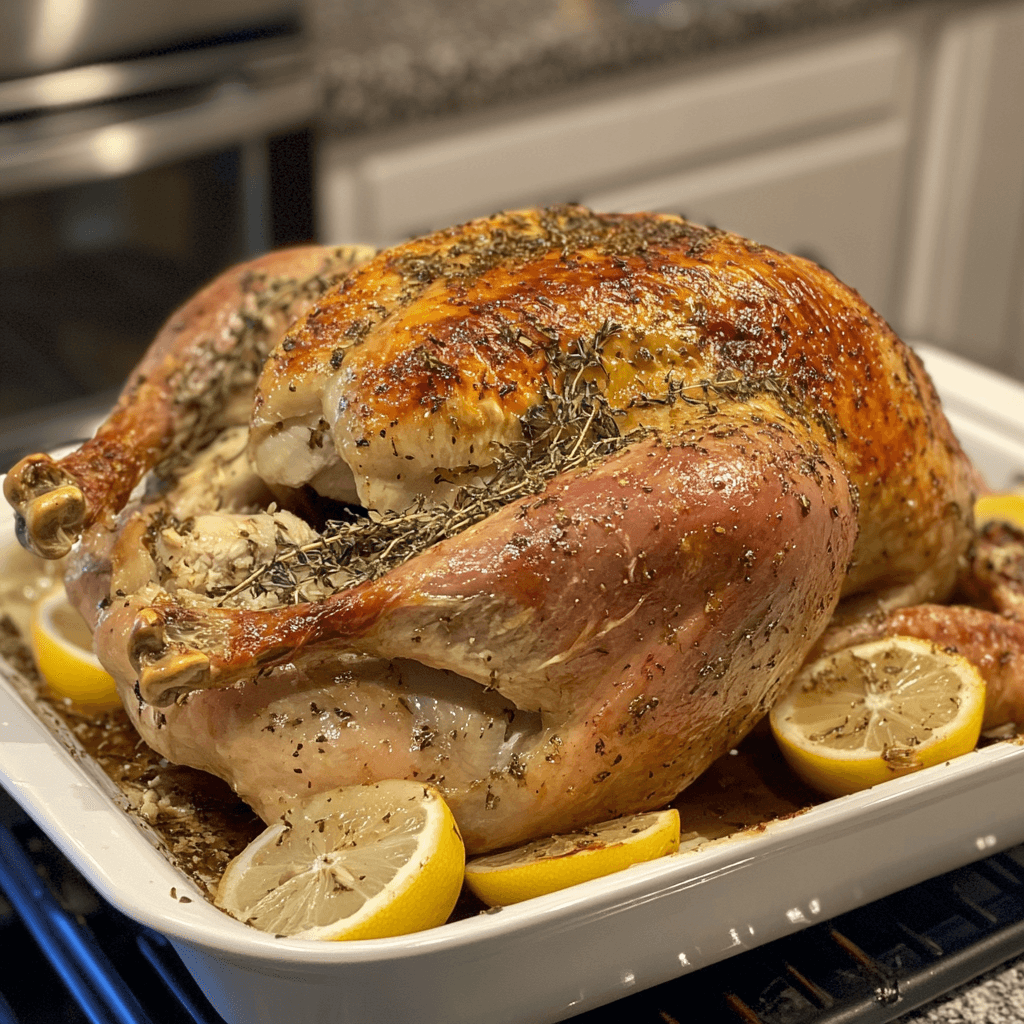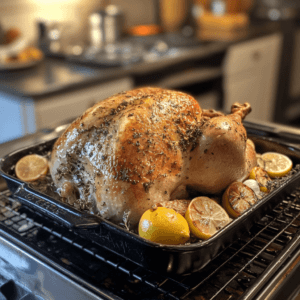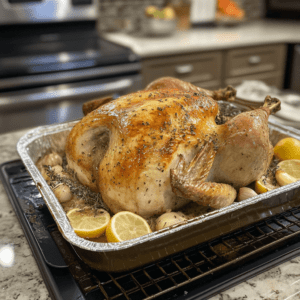When it comes to preparing the perfect holiday turkey, the question often arises: “Should you inject or brine a turkey?” Both methods aim to enhance flavor and juiciness, but they achieve this in different ways. Deciding whether to inject or brine a turkey depends on your time, tools, and desired flavor intensity. Injecting involves infusing a marinade directly into the meat, providing instant seasoning. In contrast, brining uses a salt-based solution to soak the turkey, locking in moisture over several hours. Knowing whether to inject or brine a turkey can make all the difference in your final dish, ensuring it’s as flavorful and tender as possible.
Understanding Turkey Preparation Techniques
What Does Brining Involve?
Brining is a centuries-old technique that involves soaking the turkey in a solution of water, salt, and often sugar, along with spices, herbs, and aromatics. The purpose is twofold: to enhance moisture retention during cooking and to infuse subtle flavors throughout the meat. Brining works through the process of osmosis, drawing salt into the meat, which breaks down proteins and allows water and seasonings to be absorbed.
The process requires submerging the entire turkey in the brine for several hours, often overnight. While it’s time-intensive, brining delivers consistently juicy results when done correctly.
What Does Injecting Entail?
Injecting is a more modern approach to flavoring turkey. It involves using a syringe-like injector to introduce a liquid mixture of broth, butter, herbs, spices, or other seasonings directly into the meat. Unlike brining, which works slowly, injecting infuses flavor almost instantly and allows for targeted seasoning in specific areas of the bird.
Injecting is less labor-intensive and doesn’t require large amounts of liquid or extended preparation time. However, its success depends on precise execution to avoid uneven seasoning or over-saturation in certain areas.
Why Turkey Moisture Matters
Impact of Cooking on Moisture Retention
Turkey meat, especially the white breast meat, is prone to drying out during cooking. Long roasting times, necessary to ensure food safety, can lead to the loss of natural juices, resulting in a dry and unappetizing dish. This makes moisture retention a critical consideration in any turkey preparation method.
Challenges with Dry Turkey
A dry turkey can overshadow even the best holiday spreads. The meat becomes tough and lacks the tenderness that guests expect from a well-prepared feast. Addressing this challenge is where both brining and injecting play pivotal roles.
The Science Behind Brining
How Salt Improves Moisture Retention
Brining works by using salt to alter the muscle structure of the turkey. The salt dissolves proteins in the meat, creating a gel-like consistency that holds onto water more effectively. This means that even after cooking, the turkey retains more moisture than it would have without brining.
The Role of Osmosis in Flavor Infusion
Osmosis is the process that allows flavors from the brine to penetrate the turkey. As salt enters the meat, it pulls water and seasonings along with it, ensuring that flavors are evenly distributed throughout the bird. This creates a harmonious balance of taste and texture.
The Science Behind Injecting
Direct Flavor Infusion into the Meat
Injecting skips the surface layers and deposits the flavoring liquid directly into the turkey’s muscle tissues. This targeted approach ensures that even the deepest parts of the meat are seasoned, something brining may not achieve as effectively for large turkeys.
Reducing Preparation Time Compared to Brining
One of injecting’s biggest advantages is speed. Unlike brining, which can take 12–24 hours, injecting can be done in a matter of minutes. This makes it a go-to option for last-minute preparations.
Comparing the Time Commitment
Brining Process Duration
Brining is a time-intensive process. For a turkey to properly absorb the flavors and moisture from the brine, it needs to remain submerged for several hours, often requiring overnight storage. This calls for significant planning and preparation.
Time Efficiency with Injecting
Injecting is quick and straightforward. With the right injector and liquid mixture, the process can be completed in under an hour, making it ideal for those with busy schedules or unexpected guests.
Flavor Profiles: Brine vs. Injection
How Brining Enhances Subtle Flavors
Brining creates a gentle, uniform flavor throughout the turkey. The spices and herbs in the brine infuse the meat with a mild but noticeable taste, complementing rather than overpowering the bird’s natural flavor.
Injecting for Bold and Targeted Flavors
Injecting allows for intense, concentrated flavors. By customizing the injection liquid, you can create bold profiles—like garlic butter, Cajun spice, or herb-infused stock—that stand out and add flair to your turkey.
Key Tools and Ingredients
Essential Tools for Brining
- A large, food-safe container to hold the brine and turkey.
- A meat thermometer to monitor temperature during cooking.
- Optional: Brining bags, which simplify the process and minimize mess.
Tools Needed for Injecting
- A meat injector with a sturdy needle to handle thicker liquids.
- A well-balanced liquid mixture for injecting.
- A stable surface to inject the bird evenly.
Health Considerations
Sodium Levels in Brined Turkey
One downside to brining is the potential increase in sodium content. While much of the brine is discarded, the salt that penetrates the turkey can raise concerns for those on low-sodium diets.
Healthier Options with Injecting
Injecting offers more control over the ingredients used, making it easier to create a healthier seasoning mix. By avoiding excess salt, you can customize the injection liquid to meet dietary needs.
Safety and Hygiene Tips
Avoiding Cross-Contamination
Always handle raw turkey with care. Use separate utensils and cutting boards to prevent cross-contamination, and wash your hands thoroughly after handling.
Proper Storage of Brined and Injected Turkey
Brined turkeys must be kept at a safe temperature (below 40°F) during the brining process. Injected turkeys should also be stored appropriately before cooking to avoid bacterial growth.
Costs and Resources
Ingredients Cost Comparison
Brining typically requires larger quantities of ingredients, including gallons of liquid, salt, sugar, and optional spices. Injecting is often more cost-effective, as it uses smaller amounts of concentrated flavoring liquids.
Equipment and Time Investment
Brining requires a container large enough to hold the turkey and brine, as well as the time to prepare and manage the process. Injecting, on the other hand, requires minimal equipment and can be done quickly.
Holiday Cooking Recommendations
Best Approach for Thanksgiving Turkey
Brining is a classic choice for Thanksgiving because it guarantees moist, tender meat that complements traditional sides like stuffing, mashed potatoes, and cranberry sauce. However, injecting provides a modern twist, offering the flexibility to customize flavors to suit your preferences. Whether you stick to the traditional approach or opt for the creative possibilities of injecting, both methods can help elevate your holiday turkey into a memorable centerpiece for the feast.
Balancing Tradition and Modern Techniques
Combining both techniques is a popular approach that many cooks swear by. Brining ensures excellent moisture retention by helping the turkey absorb and hold onto water, resulting in juicy and tender meat. Injecting, on the other hand, allows for the addition of bold, customized flavors directly into the meat, ensuring every bite is packed with taste. Together, these methods create a turkey that is not only moist but also rich in flavor, making it a standout centerpiece for any meal.
Expert Opinions on Brining vs. Injecting
Chef Insights on Flavor and Texture
Professional chefs often recommend brining for beginners because of its forgiving nature and the consistent results it delivers. Brining is a straightforward process that helps ensure the meat remains moist and flavorful, even if the cooking process is not perfect. On the other hand, injecting is favored for its precision and the opportunity it provides to experiment with bold and unique flavors. While brining is ideal for those starting out, injecting appeals to more experienced cooks looking to elevate their dishes with customized flavor profiles.
Survey of Home Cooks
Home cooks often value injecting for its speed and convenience, as it allows them to quickly add concentrated flavors directly into the meat. However, they also appreciate brining for its proven ability to keep turkey moist and tender. Brining helps the meat absorb and retain moisture, ensuring a juicier result, while injecting offers a quick and effective way to enhance flavor. Many cooks weigh the benefits of each method or combine them to achieve the best of both worlds.
Common Mistakes and How to Avoid Them
Over-Brining Risks
Over-brining can result in meat that is overly salty and unbalanced in flavor. To prevent this, it’s crucial to follow the recommended brining times and salt concentrations for the type and size of the meat you are preparing. Sticking to these guidelines ensures the brine enhances the meat’s moisture and flavor without overpowering it with saltiness. Proper attention to brining details is key to achieving the best possible results.
Challenges with Uneven Injection
Injecting too much liquid in a single spot can lead to uneven flavor distribution or create pockets of liquid within the meat. To avoid this, it’s essential to inject slowly and distribute the liquid evenly across multiple points. This method ensures that the flavors are well-balanced throughout the meat, resulting in a more consistent and enjoyable dish. Taking your time and injecting carefully can make a significant difference in the final result.
FAQs About Turkey Preparation
-
Is Brining or Injecting Better for Large Turkeys?
For large turkeys, injecting is often a more practical method because of its speed and precision, allowing you to quickly and evenly distribute flavors throughout the meat. However, brining remains an excellent option for superior moisture retention, as it helps the turkey absorb and hold onto water, resulting in juicier and more tender meat. Each method has its advantages, and some cooks even combine both for the best of both worlds—moisture from brining and bold flavors from injecting.
-
Can You Combine Both Methods?
Yes, many cooks choose to brine first to enhance the meat’s moisture and then inject afterward to add concentrated flavor. This combination of techniques ensures the meat stays juicy and flavorful, with the brine working to lock in moisture and the injection delivering a burst of bold, complementary tastes. It’s a popular approach for achieving perfectly seasoned and succulent dishes.
-
Does Injecting Work Well with All Flavor Profiles?
Injecting is ideal for delivering bold, concentrated flavors such as garlic, herbs, and spices directly into the meat. This technique ensures that the flavors penetrate deeply, enhancing every bite with richness and intensity. By injecting, you can infuse the meat with a burst of flavor that complements the dish while maintaining its natural juiciness and tenderness.
-
How Long Should You Brine a Turkey?
A standard brining time typically ranges from 12 to 24 hours, depending on the size of the turkey. Smaller turkeys may only need 12 hours to absorb the flavors and moisture, while larger ones benefit from a full 24 hours to ensure even seasoning throughout. Proper brining helps enhance the turkey’s juiciness and flavor, making it a key step in preparing a delicious meal.
-
What Liquids Can You Use for Injecting?
Popular options for injecting include melted butter, chicken stock, and herb-infused oils. Melted butter adds richness and flavor, making it a favorite for poultry and other meats. Chicken stock, on the other hand, provides moisture and a savory depth, enhancing the natural taste of the dish. Herb-infused oils offer a unique way to incorporate aromatic flavors directly into the meat, creating a more complex and delicious profile in the final dish.
-
Which Method is Healthier?
Injecting can be a healthier option because it provides a way to have precise control over the ingredients being used. By carefully selecting and measuring what you inject, you can ensure that only the desired substances are introduced, avoiding unnecessary additives, preservatives, or other potentially harmful components. This method allows for a more targeted and efficient approach, promoting better outcomes and a healthier overall process.
Conclusion: Choosing the Best Technique
Ultimately, the choice to inject or brine a turkey comes down to personal preferences, time, and the desired outcome. Whether you prioritize bold flavors or moist texture, either method can help you create a memorable holiday meal.
Related article:
Ultimate Guide to the Perfect Turkey Injection Recipe
How to make chicken of the woods more tender?
How Much is a Pound of Chicken of the Woods Worth?
Chicken of the Woods Recipe: A Step-by-Step Guide to Cooking This Wild Mushroom Delight



